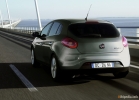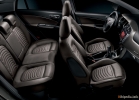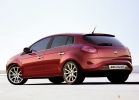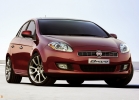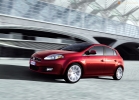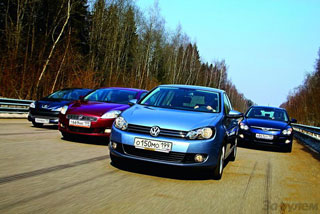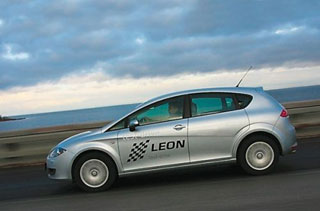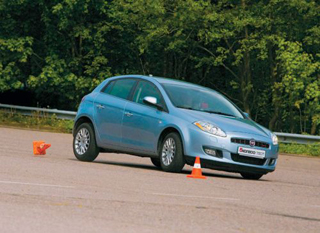Fiat Bravo test drive since 2007 hatchback
Bravo bet
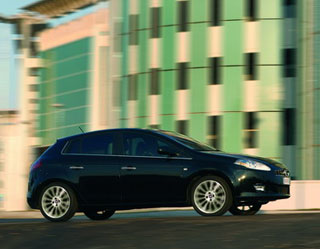 In recent years, until recently, the Italian concern extremely successfully played out the once lost market positions. Fiat's new items have become brighter and more technological, the audience applauded bold low -profiles and spent money on them with more and more hunting. Grande Punto was perceived well, and Fiat 500 promises to become a bestseller in many European countries. Only a serious statement in the demanded class C, which became a stumbling block for the company, lacked. Tempra in the 80s, Bravo/Brava in the 90s, like Stilo at the turn of the century, all these models actually failed, largely due to the financial problems of the company. Nevertheless, the Italians were not afraid to return to the name Bravo, with whom they called a car that appeared after Grande Punto. And it seems that this time they made a very thoughtful bet. In my opinion, the novelty is still far from the ideal, but the two weeks spent in the wheel of two versions of Fiat Bravo convinced me of the bet, and not bad. Although Jack-Pot will not break.
In recent years, until recently, the Italian concern extremely successfully played out the once lost market positions. Fiat's new items have become brighter and more technological, the audience applauded bold low -profiles and spent money on them with more and more hunting. Grande Punto was perceived well, and Fiat 500 promises to become a bestseller in many European countries. Only a serious statement in the demanded class C, which became a stumbling block for the company, lacked. Tempra in the 80s, Bravo/Brava in the 90s, like Stilo at the turn of the century, all these models actually failed, largely due to the financial problems of the company. Nevertheless, the Italians were not afraid to return to the name Bravo, with whom they called a car that appeared after Grande Punto. And it seems that this time they made a very thoughtful bet. In my opinion, the novelty is still far from the ideal, but the two weeks spent in the wheel of two versions of Fiat Bravo convinced me of the bet, and not bad. Although Jack-Pot will not break. 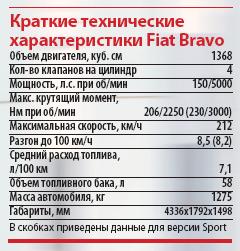 On the skate
On the skate The horse is, of course, appearance. Even if the Fiat designers were not always able to get to the point, but you can’t blame any of their works of orderly. So the face of Bravo is bold and unusual in its own way. Moreover, only a 5-door hatchback is proposed, which, in my opinion, looks very good. The feed with round lighting technology and a pleasant look at the lid of the trunk lid was especially successful. But in the front, Punto is influenced, which is expressed in the characteristic, slightly outstanding lip of the radiator grille, and in the form of headlights, floating on the hood and front wings. In general, the car externally has it and looks sports. Especially if we talk about the Sport version, which is equipped with 17-inch cast discs of the original design, an elegant and barely noticeable aerodynamic body kit and a sports suspension with shortened springs.
In general, two versions of Bravo are two different cars and, as it seemed to me, it is sports that is most harmonious from the point of view of compliance of the form of content. But more on that later, while I will pay attention to the interior decoration.
Expressive outside, Fiat Bravo is not trivial inside. The first thing I personally paid attention to is a spacious salon. Agree, it’s nice when, despite the rather thick door casing, where you can attach the elbow, there are plenty of space in the shoulders and above your head. Sitting in front do not touch each other, and the three of them can be settled from behind. By the way, according to the automaker himself, Fiat Bravo is the only car in its segment, in which two people in 184 cm tall can be arranged in the back seat, while 183-centimeter people will be comfortable in front. Funny. And, of course, one cannot fail to mention a spacious 400-liter luggage compartment. Naturally, the rear seats may take shape, which will increase the useful volume to 1175 liters. For small luggles, there is a place in the door pockets and a rather spacious glove compartment. In addition, there are several compartments in the front panel, under the central armrest, there are small recesses on the compact tunnel between the driver and the front passenger.
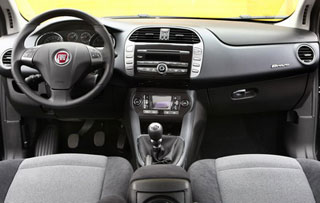 The seats are quite convenient. In the Sport version they are slightly tougher, but better profiled. The range of their adjustments allows you to easily find a convenient landing, in addition, the steering wheel moves both in height and in departure. Moreover, it has characteristic protrusions under the grip, and in the charged modification, in addition, it is sheathed with leather with deliberately gross shading with red threads. On the steering wheel of the control key of the audio system and multimedia interface. By the way, right under the climate control unit is a USB-extension for flash drive or MP3 player. All this operates on the Windows Mobile platform from Microsoft. True, the system does not perceive Russian names of files, issuing an abracadabra.
The seats are quite convenient. In the Sport version they are slightly tougher, but better profiled. The range of their adjustments allows you to easily find a convenient landing, in addition, the steering wheel moves both in height and in departure. Moreover, it has characteristic protrusions under the grip, and in the charged modification, in addition, it is sheathed with leather with deliberately gross shading with red threads. On the steering wheel of the control key of the audio system and multimedia interface. By the way, right under the climate control unit is a USB-extension for flash drive or MP3 player. All this operates on the Windows Mobile platform from Microsoft. True, the system does not perceive Russian names of files, issuing an abracadabra. In general, in the interior, it seemed to me, the influence of Alfa Romeo is clearly traced. This is expressed both in its general style and in details. For example, the central console is deployed to the driver, and the instrument shield is two round windows of tachometers and speedometer, between which the signs of the fuel level and the temperature of the power unit, as well as the compact screen of the on -board computer, were perched. The arrows look strictly down, and in order to figure out how to control the menu for people, unprepared people will have to get up. Indeed, for the settings, of which the masses, buttons are responsible to the right of the central console, closer to the passenger. Why were they placed there, for me it remained a mystery. How it is not clear from what considerations the speedometer has such a small digitization that it is impossible to read the readings on the move, out of the corner of the eye. By the way, the SPORT version has a white one, and the usual Bravo has black. But this is not reflected in information content.
The various textures of the materials used in the same front panel does not bother, all this looks very decent together, and does not arise to the quality of the complaints. The audio system is emphasized by a stylish mirror decor. To the left of it is a button or key. In an ordinary Bravo, this is the key of the city mode of operation of the steering hydraulic control, in which the steering wheel becomes simply weightless. In the Sport version, this is a button that activates a completely different function.
It's time to go to the running qualities.
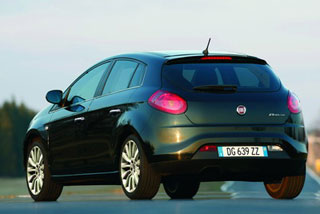 Demanel!
Demanel! It is no secret that more and more stringent environmental requirements force automakers to look for new ways to reduce emissions, not forgetting about the power characteristics. The most popular becomes the use of boosting technology, and on small engines. The first, by the way, was the Japanese on models such as Suzuki Alto, Subaru pleo, Nissan Moco or Daihatsu Copen. In them, 3 or 4-cylinder engines with a volume of less than a liter due to the turbine were accelerated to quite decent capacities, which, taking into account the small weight of the machine and a large torque, turned such compact machines into city missiles. Fiat designers went along the same way.
Since we are talking about a car with a length of 4.3 meters and a mass of more than 1200 kg, the latest gasoline 4-cylinder engine with a volume of 1.4 liters of the T-Jet series was installed under the hood, which, depending on the version, develops 120 or 150 hp. Naturally, at the expense of turbocharges, which in both cases of 206 nm of maximum torque provides in both cases. The basis for the motor was a 1.4-liter 90-horsepower atmospheric, which is placed under the hood of the same Grande Punto. However, the engine was significantly modified. By the way, 120,000 hours of work were spent on minimizing the stressful effect of turbocharged.
Only turbocharged versions are offered to the Russian buyer. The most powerful, 150-horsepower, were tested. I want to immediately notice engines exclusively with a 6-speed manual gearbox. This once again emphasizes the sportsity of the machine, and not groundlessly.
The first acceleration dispelled all sorts of suspicions of the slowness of the car. Regardless of the version, or not, there is no complaints about dynamics. The electronic accelerator pedal is not mechanically connected to the engine (Drive-by-Wire system), which guarantees a quick response to pressing. It is also pleasant that there is practically no feeling of the so -called turboyam. It is barely noticeable in the area of \u200b\u200bvery low revolutions from idle to 2000 rpm. The rest of the working range, the engine is very elastic, which allows you to not really bother yourself with frequent gear shifts. Moreover, the first gear is quite short, and the cutting off maximum revolutions works at 6000 on a tachometer. However, there are also no problems with quick switching, since the μP lever, although you can’t call it clear with clear, but does not suffer excessive withdrawal. Of course, the clutch pedal could be more final, but the good of its course is not too long. In a word, Bravo allows you to feel confident both in the city and beyond, offering the driver good opportunities and a good traction stock in almost the entire speed range. Naturally, there are no special complaints to the brake system, which provides effective slowdown at any speed. And the pedal force is easily dosed.
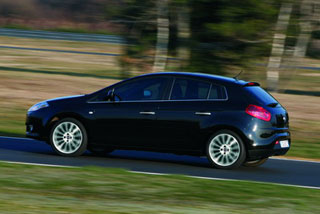 Sport or not Sport?
Sport or not Sport? I think the most important difference between the Sport version is three things: a suspension with half-wagging springs, 17-inch cast discs of very beautiful ones, I note, and the so-called sports regime, which is activated by the already mentioned Sport button on the central console. When pressing the pressure pressure on it, about 0.3 atmospheres rise, which, although it does not affect the power, allows you to increase the maximum torque by 24 nm. In addition, the accelerator pedal becomes a little sharper, like a steering wheel. As a result, a very noticeable increase in dynamics. In dry numbers, acceleration to 100 km/h is 0.3 seconds. But the main thing is not this. And in the fact that on the usual version, it seemed to me, there is a small problem with the realization of the dynamic potential of the machine.
This is expressed not only in the fact that the front wheels often skid in this regard both versions are good. The problem is excessive soft suspension of standard modification. Hence, not at all the obligatory rolls of the body in corners and, as a result, the loss of stability in vihi and with fast driving. There is a strange dissonance like the machine is dynamic, but there is practically no sensation of this dynamics. At the same time, I must notice that the roads of the road shock absorbers are well worked out by the standard modification, practically not boring with excess sounds and knocks. But still, such settings with potential are not knitted, and the steering seems unnecessarily light, not informative and not at all sharp.
A completely different thing is Sport. The springs and shock absorbers are tougher, and the lower -profile rubber and a little stronger of the tightened steering seriously change the sensation of riding. The cranes of the body are minimal, which, however, is aking off shaking in a more rigid seat. In addition, such a car is smaller than the clearance, which is why you can sometimes struck the bottom or plastic on the ground on a bad road. A couple of times, getting into potholes, I heard a protesting sound of pendants that worked before the end of the pendants.
Nevertheless, it is the Sport version that is most suitable for Bravo, since it allows you to feel much more confident at the wheel. Indeed, regardless of the modification, the designer endowed the car with cheerful handling. So, for discharge of gas in the bend, you can easily earn the skid of the rear axle. The stabilization system will help, but you cannot rely entirely on it. At the same time, it is still impossible to say that the car has a clear excess rotation. It is rather neutral, and the machine is well controlled by the steering wheel and gas. But again, it is better that it is Sport everything is clear, everything is predictable.
We should add
It seems to me that the most difficult task that the Russian distributor and partner Fiat, Sollers, is now solving, is to change the attitude of the Russian motorist towards Italian cars. To make him believe that in cars from the Appeninsky Peninsula there is its own charm, and in terms of reliability they are not much inferior to most European analogues. There are progress in this direction, but there is no breakthrough yet. Among the reasons, as I see, is obviously weak advertising, and an ambiguous pricing policy. Indeed, for the same Bravo dealers will ask at least 655 thousand rubles. And even if the basic equipment is very rich, it is also necessary that the person does not recoil from the price tag, not having time to get into the car.
Andrey Osipov
Photo fiat
Video Test Drive Fiat Bravo since 2007
Video Crash tests Fiat Bravo since 2007
Fiat Bravo test drives since 2007
Crash Test Fiat Bravo since 2007
Krassh Test: Detailed Information33%
Driver and passengers
16%
Pedestrians
36%
Children-passengers

